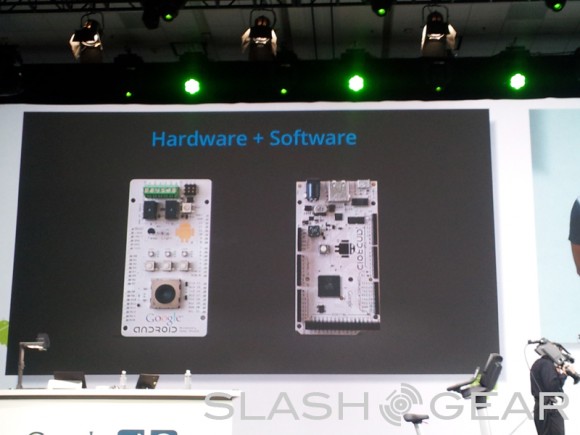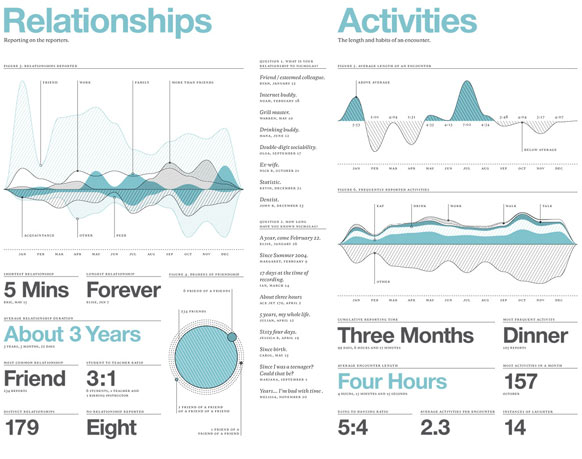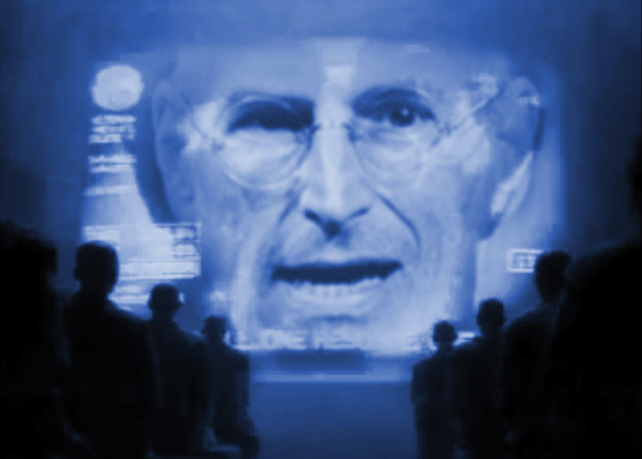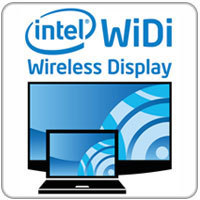Friday, May 27. 2011
BlueStacks puts Android apps on Windows
Via cnet
-----
If you miss your Android apps when using your PC, a start-up called BlueStacks says it has the answer.
Today, the company announced first-round funding of $7.6 million from Ignition Ventures, Radar Partners, Helion Ventures, Redpoint Ventures, and Andreessen Horowitz for its virtualization technology that provides a foundation for Google's mobile operating system atop Windows. It's got partnerships with Citrix for distribution to interested businesses and with assorted as-yet unnamed PC makers for consumers.
"The idea is very simple," said Chief Executive and co-founder Rosen Sharma, who previously was McAfee's chief technology officer. It started when the 6-year-old daughter of another company co-founder was using Android apps on his smartphone. "She went to a Netbook, and she wanted the same apps on it," Sharma said. But it wasn't possible at the time.
"The number of people who want something like that is very, very large--both consumer and enterprise," Sharma said.
Consumers could be interested in having a Windows version of their LinkedIn app for social and work connections, their sports app for staying on top of the latest game results, or Pulse app for reading news, Sharma said. And businesses are interested in extending the reach of mobile apps they've created for their employees.
"A lot of people are doing their own apps" inside the company, Sharma said. "The GM dealership app is an Android app. People who were doing BlackBerry apps earlier are doing Android apps now."
The company, incorporated in 2008, plans to release a free beta version of its software for people to download in June or July. It hasn't yet set pricing for the final version, which is due to ship in the fourth quarter. Partnerships with PC makers should be announced starting next week, the company said.
Once people install the software, running an Android app is easy, Sharma said. "From the user experience, it looks just like they're using an app," he said.
Indeed, my CNET colleague Seth Rosenblatt found using Android apps on Windows with BlueStacks a seamless and effortless process.
BlueStacks uses Amazon.com's Android marketplace to distribute apps because Google restricts its Android Market to specific ARM-based devices.
User interface issues are one complication. Smartphone apps are designed for a touch-screen interface and sometimes for a multitouch interface, so some things won't work easily with a mouse and keyboard. Sharma brushed the worry aside, though.
"We are seeing a lot of touch devices. In two years, a standard laptop will have a touch screen," he said. In addition, trackpads on new laptops support multitouch gestures such as pinching and zooming, he said.
"That leaves very few apps that require absolute touch or multitouch, like games," Sharma said. "The coverage you get is pretty large."
There are some caveats. Android today runs on the variety of ARM processors that are used in smartphones and tablets, but Windows machines--for now at least--use x86 chips from Intel or Advanced Micro Devices. BlueStacks therefore runs its own build of the OS from the open-source Android project.

The kind of high-powered apps you could run in Android include Microsoft Word and Adobe Photoshop.
(Credit: BlueStacks)Another processor complication is that some Android programs--the Firefox and Opera browsers, for example--use the Native Developer Kit that Google provides for software makers that want to write software that runs directly on the processor rather than on Android's Java-like software foundation. Those won't run on BlueStacks today.
But they will later.
"Most apps are cross-platform. But any app that uses native ARM code will not run today," Sharma said. "We will enable those apps by December."
Ultimately, BlueStacks expects to bridge the gap the other way, too, letting Windows apps run on Android. That will work only on x86 versions of Android, which currently aren't on the market.
Campbell, Calif.-based BlueStacks has only 20 employees now, and most are in India where expenses are lower, so payroll costs won't drain the bank account quickly. Instead, the company plans to use its VC money to try to spread its software foundation as rapidly as possible.
"Our question is getting distribution," Sharma said. He expects to have 20 million copies distributed through computer makers and 60 million through Citrix's software channel, he said.
"Our goal is by end of 2012 to have a ridiculous-looking distribution number. Then the game changes completely," Sharma said.
-----
Monday, May 16. 2011
NXP GreenChip: Internet Addresses for every light bulb
Via ubergizmo
-----

With the GreenChip, each bulb becomes a small networked device
NXP has just announced its GreenChip, which gives every light bulb the potential of being connected to a TCP/IP network to provide real-time information and receive commands, wirelessly. This feels a bit like science-fiction talk, but NXP has managed to build a chip that is low-cost enough to be embedded into regular light bulbs (and more in the future) with an increase of about $1 in manufacturing cost. Obviously, $1 is not small relative to the price of a bulb but, in absolute terms, it’s not bad at all — and the cost is bound to fall steadily, thanks to Moore’s law.
But what can you do with wirelessly connected bulbs? For one, you can dim, or turn them on and off using digital commands from any computer, phone or tablet.
You can also do it remotely: those chips have the potential of making home automation much easier and more standard than anything that came before. Better home automation can also mean smarter (and automated) energy -and money- savings. the bulbs are also smart enough to know how much energy they have consumed.
Although the bulbs use internet addresses, they are not connected directly to the web. They don’t use WIFI either, because that protocol is too expensive and not energy-efficient for this usage. Instead, the bulbs are linked through a 2.4-GHz IEEE 802.15.4 network and in standby mode, the GreenChip consumes about 50mW.
The network itself is a mesh network that is connected to a “box” that will itself be connected to your home network. Computers and mobile devices send commands to the box, which sends them to the bulbs. Because it is a mesh network, every bulb is considered to be a “network extender”, so as long as there is 30 meters between two bulbs, the network can be extended across very large surfaces. In a typical house, that would mean no “dead spots”.
The first products will be manufactured by TCP, which manufactures about 1M efficient light bulbs (of all sorts) per day. TCP supplies other brands like Philips or GE. The prices of the final products have yet to be determined, but NXP expect them to be attractive to consumers. Of course, we need to see what the applications will look like too.
This is an interesting first step in embedding low-cost smart chips in low-cost goods. Yet, this is a critical step in creating a smarter local energy grid in our homes.
Tuesday, May 10. 2011
Google Unveils Arduino-Based Android Open Accessories
Via SlashGear
During today’s opening keynote for Google I/O, they touched on all the major topics that folks were anticipating including Android Ice Cream Sandwich, Google Music, and Google TV, but they also added some unexpected developments. One of them being their new Android Open Accessory initiative, that will allow developers to create their own hardware accessories that can be controlled by Android.

The Android Open Accessory system is built on open-source Arduino. It will will allow externally accessories connect to an Android-powered device via USB and eventually Bluetooth. This could essentially mean the start of a whole slew of “Made for Android” devices such as docks, speakers, or even an exercise bike. This opens up a whole world of possibilities now for external accessories to work with Android.
Google is offering an Android Device Kit or ADK for developers. The kit comes with a sample implementation in the form of a USB accessory along with all the hardware design files, the code for the accessory’s firmware, and the Android application that interacts with the accessory.
---
Android Open Accessory Development Kit
Monday, May 09. 2011
You've Agreed To A Lot By Using iTunes Store
Via App Advice
-----
What language is contained in the new Terms and Conditions page for iTunes? More than you might expect, according to CNN.com.
Each time Apple revises its terms, consumers are greeted with the “iTunes Terms and Conditions have changed. Before you can proceed you must read & accept the new Terms and Conditions” message. Naturally, most of us accept those terms without reading one word of the document.
And why would we? The latest document is 56 pages.
However, the latest agreement includes language readers may find interesting.
For example, under Genius, the terms state:
“When you use the Genius feature, Apple will use this information and the contents of your iTunes library, as well as other information, to give personalized recommendations to you.”
According to New York technology attorney Mark Grossman, consumers should take away from this paragraph the following:
“”It’s a long-winded way of saying we (Apple) can figure out where you are through your IP address. You should assume that everything you do is tracked or trackable.”
This is particularly eye opening given the recent “locationgate” controversy. Since we’ve accepted Apple’s terms, the company had every right to track our every move.
Another issue is that of licensing. Some consumers might find it surprising that EVERY transaction in iTunes isn’t of a product, but rather a “license.”
Accordingly under Licensing:
“You agree that the Service, including but not limited to Products, graphics, user interface, audio clips, video clips [and] editorial content … contains proprietary information and material that is owned by Apple and/or its licensors, and is protected by applicable intellectual property and other laws, including but not limited to copyright.”
In other words:
That sounds confusing. Handel explained it this way: When we buy something from iTunes, we are paying for the license to listen to music or watch a movie on our iPhone or other Apple device. But we are not buying the product itself and so we can’t actually own it, he said.
Jonathan Handel is a Los Angeles-based entertainment attorney.
Finally, it’s worth mentioning Apple isn’t responsible for lost or deleted downloads.
Under Loss of purchases:
“Products may be downloaded only once and cannot be replaced if lost for any reason. Once a Product is downloaded, it is your responsibility not to lose, destroy, or damage it, and Apple shall not be liable to you if you do so.”
This mean, according to Grossman, that anyone taking Apple to court over a lost digital file would lose very quickly:
“The contract clearly says ‘we are not responsible,’ and it’s firmly established in the law.”
Of course, we as consumers have every right to not accept Apple’s terms and conditions. However, in doing so, we could no longer make purchases. And this decision would make our iDevices much less versatile.
Friday, May 06. 2011
Visual Dashboard
-----
The data entered by millions of social-network users could be turned into revealing infographics.
By Christopher Mims

Ever wondered just how much coffee you drank last year, or which movies you saw, and when? New Web and mobile apps make it possible to track, and visualize, this personal information graphically, and the trend could be set to expand dramatically.
This is because Facebook recently acquired one of the leading personal-data-tracking mobile apps and hired its creators. The social-networking giant could be gearing up to offer users ways to chart the minutiae of their lives with personalized infographics.
Nick Felton and Ryan Case, two New York-based designers, have pioneered turning the mundane contours of an everyday life into a kind of visual narrative. Each year, Felton publishes an "annual report" on his own life: an infographic that charts out his habits and lifestyle in great detail.
Felton and Case have also created a mobile app, called Daytum, that lets users gather personal data and represent it using infographics. Daytum already has 80,000 users, whose pages provide a detailed snapshot of everything from coffee drinking habits to baseball stadium visits. The app gives users the ability to easily record their own information, whatever it might be, and display it in an attractive manner, whether or not they are a designer.
Daytum is part of a larger trend in tracking personal information. But traditional personal tracking applications tend to revolve around medical data, sleep schedules, and the like. In Felton's creative visualizations, even something as mundane as how many concerts he attended in the past year becomes a kind of art. "I think there's storytelling potential in data," he says.
Felton says he can't talk about what he'll be doing at Facebook, but says, "Clearly, companies like Facebook recognize the value of the kind of work we were doing."
Thursday, May 05. 2011
Intel WiDi
Via Intel
-----
Intel’s WiDi technology is an interesting feature on some notebooks that allows the user to wirelessly shoot video from the computer over to another screen in range of the wireless transmission. WiDi stands for wireless display, and it supports 1080p video when used with machines that are running the new second-generation Core processors. Intel has announced that it has now updated WiDi to a later version, and the new version has some cool features that weren’t available before.
The release notes for the new 2.1 update tells what the new added features are. Version 2.1 now has a unified 32-bit/64-bit installer using a single file. The new version will stream up to 1080p resolution video with hardware based H.264 encoding. The service now supports 802.11n PAN at 2.4GHz and 5GHz. Intel HD Graphics 3000 based hardware encoding is supported with updated graphics drivers. Verizon 2.1 also brings the ability to view HDCP 2.0 content with support for DVD, Blu-ray and some online protected content.
Other new features include 6-channel 16-bit/48 kHz LPCM sound output with playback application support. The latency in the new version has dropped to under 300ms as well. WiDi will also now detect ISDB-T and ISDB-S TV Tuners. You can download the update directly from Intel for WiDi right now and enjoy shooting your wireless content over to a TV or bigger computer screen.
Wednesday, May 04. 2011
PaperPhone Flexible Smartphone Prototype, Responds To Touch And Bends
-----

Earlier today we mentioned that E-Ink, the company behind those Amazon Kindle displays, have been busy working on new and improved E-Ink screens that can display full-color content. And with that, were some nifty videos of the E-Ink screens in action on various flexible materials including cloth and Tyvek. Well now we have some more nifty videos, but of E-Ink technology being harnessed by a group of researchers to produce a flexible smartphone dubbed the “PaperPhone.”
The PaperPhone features advanced “thin-film” technology that allows it to be thin like a sheet of paper, but function as a smartphone that is operated by both touch and bending. It was developed by a collaborative effort between researchers at Queen’s University in Ontario, Canada, and Arizona State University.
“This computer looks, feels, and operates like a small sheet of interactive paper,” says Roel Vertegaal, the inventor and director of the Human Media Lab at Queen’s University. “You interact with it by bending it into a cell phone, flipping the corner to turn pates, or writing on it with a pen.”
It features a 9.5 cm diagonal E-ink display and can carry out the tasks of most smartphone such as making phone calls, storing and playing music, and accessing ebooks. Flipping pages in an ebook can be programmed such that you bend the PaperPhone much like you would an actual book. A myriad of touch and/or bend gestures can be programmed to carry out various functions.
Vertegaal believes that this is the future of computing as we head towards a truly paperless workflow, whether it be in offices, hospitals, or schools. He will be presenting the project on May 10th in Vancouver Canada to the Association of Computing Machinery’s CHI 2011 conference, which is the premier international expo for the human-computer interaction field.
The first video below shows the PaperPhone in action, while the second video shows a modification of the technology in the form of a wristband computer called the Snaplet. It demonstrates the Snaplet being responsive to touch, bend, and even use with a stylus.
Friday, April 22. 2011
Major Amazon Outage Ripples Across Web
-----
When a busy cloud computing platform crashes, the impact is felt widely. That’s the case with today’s extended outage for Amazon Web Services, which is battling latency issues at one of its northern Virginia data centers. The problems are rippling through to customers, causing downtime for many services that use Amazon’s cloud to run their web services.
The sites knocked offline by Amazon’s problems include social media hub Reddit, the HootSuite link-sharing tool, the popular question-and-answer service Quora, and even a Facebook app for Microsoft (see a full list of affected sites).
The issues began at about 1 a.m. Pacific time and are continuing as of 2:30 p.m. Pacific, with Amazon saying it still cannot predict when services will be fully recovered. By mid-afternoon, Amazon said it had limited the problems to a single availability zone in the Eastern U.S., and was attempting to route around the affected infrastructure. The AWS status dashboard shows that the services experiencing problems include Elastic Compute Cloud (EC2), Amazon Relational Database Service and Amazon Elastic MapReduce and are focused in the US-East-1 region.
Networking Event Triggers Problems
The problems are focused on Elastic Block Storage (EBS), which provides block level storage volumes for use with Amazon EC2 instances. Latency problems at EBS were cited by Reddit when the site experienced major downtime in March.
“A networking event early this morning triggered a large amount of re-mirroring of EBS volumes in US-EAST-1,” Amazon said in a status update just before 9 am Pacific time. “This re-mirroring created a shortage of capacity in one of the US-EAST-1 Availability Zones, which impacted new EBS volume creation as well as the pace with which we could re-mirror and recover affected EBS volumes. Additionally, one of our internal control planes for EBS has become inundated such that it’s difficult to create new EBS volumes and EBS backed instances.
“We are working as quickly as possible to add capacity to that one Availability Zone to speed up the re-mirroring, and working to restore the control plane issue,” Amazon continued. “We’re starting to see progress on these efforts, but are not there yet. We will continue to provide updates when we have them.”
UPDATE: At 10:30 Pacific, Amazon said it was making “significant progress in stabilizing the affected EBS control plane service,” which was now seeing lower failure rates. “We have also brought additional capacity online in the affected Availability Zone and stuck EBS volumes (those that were being remirrored) are beginning to recover. We cannot yet estimate when these volumes will be completely recovered, but we will provide an estimate as soon as we have sufficient data to estimate the recovery.”
UPDATE 2:At 1:48 p.m. Amazon said a single Availability Zone in the US-EAST-1 region continues to experience problems launching EBS backed instances or creating volumes. “All other Availability Zones are operating normally,” Amazon said. “Customers with snapshots of their affected volumes can re-launch their volumes and instances in another zone. We recommend customers do not target a specific Availability Zone when launching instances. We have updated our service to avoid placing any instances in the impaired zone for untargeted requests.”
The outage even has affected a Microsoft initiative, according to a Facebook post by the company. “For those of you trying to enter our ‘Big Box of Awesome’ sweepstakes…the entry site is currently down, related to a broader problem impacting a number of sites across the internet today,” Microsoft told its Facebook followers. “We’ll let you know when it’s back up.” Microsoft has its own data center infrastructure, but some business units use third-party services. The Big Box of Awesome Facebook app is hosted on EC2.
Multi-Region Failover Option
The outage appears to affect many, but not all, customers using the US-East-1 region. Amazon operates multiple regions, allowing users to add redundancy to their applications by hosting them in several regions. In a multi-region setup, when one region experiences performance problems, customers can shift workloads to an unaffected region.
Whenever Amazon Web Services experiences outages and performance problems, it typically highlights the multi-region option, which allows customers to avoid having its cloud assets constitute a “single point of failure.” Today’s outage is likely to prompt some customers that rely on Amazon to examine adding additional regions to their deployment and other strategies to work around EC2 outages.
The outage is also likely to prompt discussion of the reliability of cloud computing. Is it a fair question to raise? Today’s outage has affected many customers, highlighting the vulnerability of a single service hosting many popular sites.
This has also been true of earlier outages at dedicated hosting providers like The Planet or data center hubs like Fisher Plaza. Companies relying upon those facilities could avoid outages by adding backup installations at other data centers – which is essentially the same principle as adding additional zones at Amazon.
Stuff happens. We write about outages all the time. But real-world downtime is particularly problematic in the context of claims that the cloud “never goes down.” Cloud infrastructure can also fail. The difference is that cloud deployments offer new options for managing redundancy and routing around failures when they happen.
Quicksearch
Popular Entries
- The great Ars Android interface shootout (130700)
- Norton cyber crime study offers striking revenue loss statistics (100985)
- MeCam $49 flying camera concept follows you around, streams video to your phone (99708)
- Norton cyber crime study offers striking revenue loss statistics (57214)
- The PC inside your phone: A guide to the system-on-a-chip (56998)
Categories
Show tagged entries
Syndicate This Blog
Calendar
|
|
December '25 | |||||
| Mon | Tue | Wed | Thu | Fri | Sat | Sun |
| 1 | 2 | 3 | 4 | 5 | 6 | 7 |
| 8 | 9 | 10 | 11 | 12 | 13 | 14 |
| 15 | 16 | 17 | 18 | 19 | 20 | 21 |
| 22 | 23 | 24 | 25 | 26 | 27 | 28 |
| 29 | 30 | 31 | ||||


